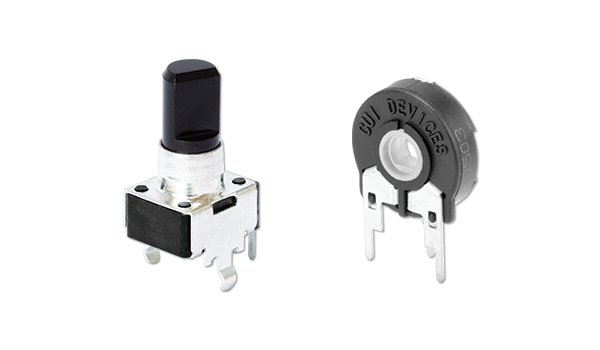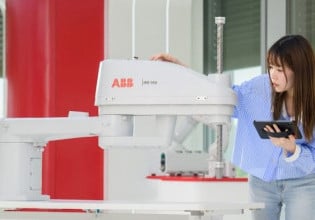Controlling Processes with Analog Inputs: New Potentiometer Lineup
CUI Devices has expanded its product line of motion and control components, offering a new family of shaft and shaftless potentiometers that come in different varieties with varying resistance ratings.
CUI Devices is a manufacturer of electronic components, supplying products for motion and control applications, as well as relays, switches, sensors, thermal management, and audio solutions. Their product line is always expanding, including a recently announced addition to their lineup of potentiometers.
What is a Potentiometer?
You may not realize it, but potentiometers are used in a variety of applications, and it's likely that you have used them in your daily routine. They are used as volume control on audio equipment, controlling frequency on variable frequency drives, adjusting the PWM speed of DC motor drives, and setting process variable set points. Potentiometers are mainly used when you want to add a variable setting with one control. A potentiometer is simply a variable resistor. Sometimes these potentiometers are built directly into the devices from the manufacturer, but many of them are connected to analog input terminals by end users for control of certain applications.
As the potentiometer is rotated in one direction, the resistance will either rise or fall, depending on the direction the potentiometer was rotated. As the resistance increases, the voltage across the potentiometer will fall, and the opposite for when the resistance is reduced. Within the control system, this voltage is monitored and scaled into engineering units. A great example is a soundboard that you might see in a recording studio. Soundboards have many potentiometers for setting different sound effects and levels.

CUI Devices' new family of shaft and shaftless rotary potentiometers. Image used courtesy of CUI Devices
PT and PTN Rotary Potentiometers
The new family of potentiometers from CUI Devices comes in different varieties with varying resistance ratings. A typical potentiometer will have a power rating in watts and a max resistance rating in ohms and have a shaft that, when turned, will lower or raise the resistance. The PTN series is a shaftless potentiometer that uses an external actuator that is magnetically coupled to the internal position element which reads the position of the actuator. The shaftless design can be used in washdown or harsh environments because there are no exposed moving parts.
Both the PT and PTN potentiometers range in resistance from 1 - 2000 kΩ and range in power ratings from 0.05, 0.15, and .020 W. They come in the typical sweep formats of linear, logarithmic, or reverse logarithmic tapers and have a rotational life of 10,000 cycles. Both families come in three rotation models: 235, 265, and 280 degrees and can be either crimped pins or straight pins.

Potentiometers are used as volume control on audio equipment or controlling frequency on VFDs. Image used courtesy of Evija
Application of a Potentiometer
Switches are great when you want to know an on or off state of one input signal, but sometimes you need an analog value from an operator—potentiometers are a great way to allow operators or users the ability to set variable states from one input device. Potentiometers can also be used as control of a pointer within a simple HMI for a control device.
To use a potentiometer in the above-mentioned cases, we need to apply a voltage and then measure the voltage coming out of the potentiometer. This voltage can be scaled to whichever unit we want. For a volume application, the range might be from 0 to 100, for an HMI application the range might be from 1 to 10 menu options. The scaling math will take place within the control system program.
Selecting the correct potentiometer is important, if the resistance is too large for the voltage being used, you might not get a granular change in the output voltage. If the resistance is too low, you may not see a change in voltage at all. Always do the proper voltage drop calculations for this listed resistance before ordering.






